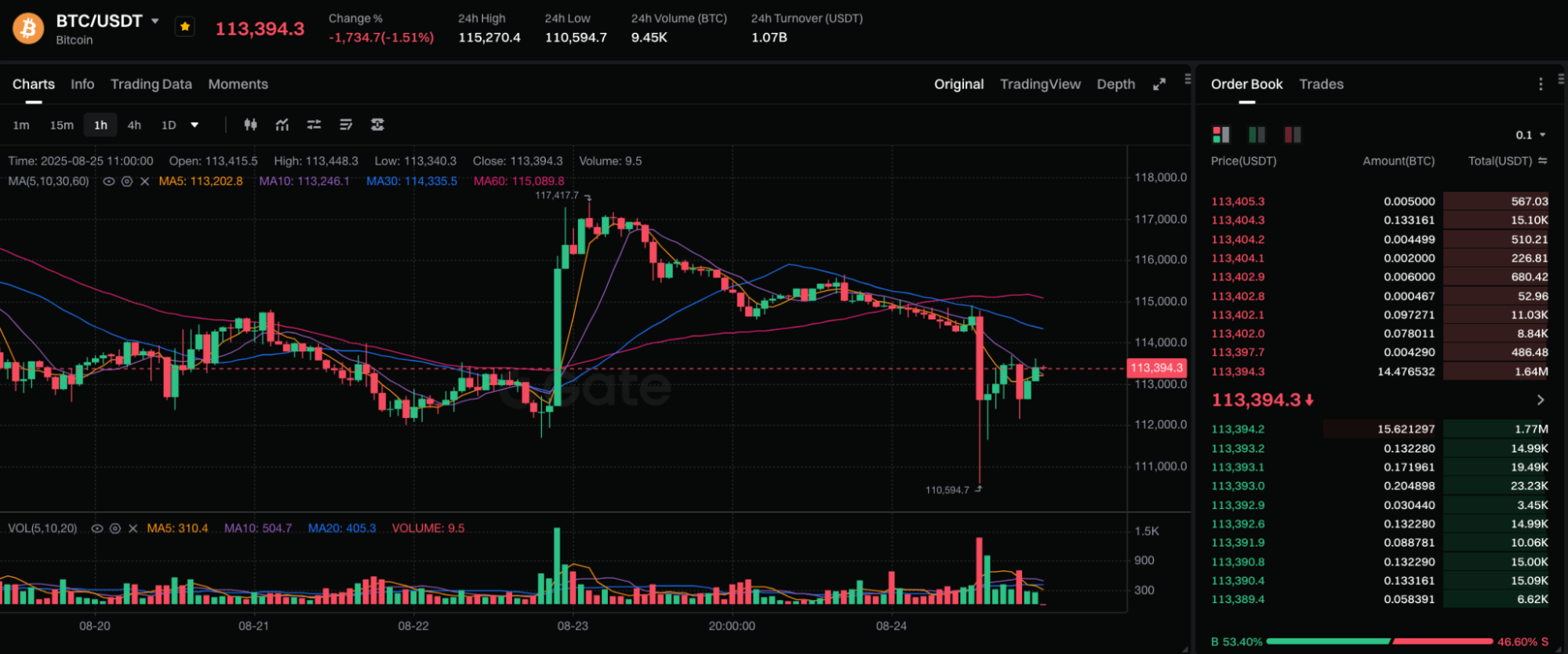Bitcoin Drops 5% in a Week to Below $115K: Reasons Explained

Image: https://www.gate.com/trade/BTC_USDT
Bitcoin dropped roughly 5% in just one week. Its price fell below $115,000. The sharp correction drew widespread market attention and prompted significant discussion. Below is an in-depth analysis of the causes behind the headline: “Bitcoin drops 5% to $115K in one week. Here’s why.”
Why did Bitcoin drop 5% in one week?
Over the past week, Bitcoin has experienced a clear correction, with an overall decline of around 5%, nearing the $115K level again. Multiple factors combined to cause this move rather than it being an isolated event.
Profit-taking drives the sell-off
The primary reason was profit-taking after Bitcoin set new highs. As prices reached peak levels, many traders began locking in profits. This initiated a significant volume of sell orders and accelerated the decline. Once Bitcoin fell through a key support level, a wave of forced liquidations triggered additional selling pressure, amplifying the sell-off in the short term.
Macroeconomic factors and Fed expectations shape sentiment
Macroeconomic data and shifting expectations around Federal Reserve policy also played a crucial role. For instance, US inflation data coming in above expectations eroded confidence in potential rate cuts, reducing demand for risk assets like Bitcoin. In this environment, investor risk aversion increased and resulted in capital outflows from the crypto market. On August 22, 2025, Powell stated that economic risks provided stronger grounds for rate cuts, which quickly sparked a rebound in the crypto markets.
Technical correction and critical support levels
From a technical perspective, Bitcoin retreated toward $115K, testing a major support zone that includes the 23.6% Fibonacci retracement and the previous high area. Many investors have long viewed this zone as strong support, and many are watching to see whether renewed buying interest will enter at these levels.
Summary: Short-term correction may lay the groundwork for long-term growth
In summary, this 5% drop in Bitcoin represents a typical pullback following a strong rally. Profit-taking and diminished risk appetite were the main drivers, while shifting macro policies amplified the adjustment. The $115K area remains a firm technical support, potentially setting up the next rebound. Short-term volatility may pave the way for a longer-term uptrend.
Related Articles

Pi Coin Transaction Guide: How to Transfer to Gate.io

What is N2: An AI-Driven Layer 2 Solution

How to Sell Pi Coin: A Beginner's Guide

Grok AI, GrokCoin & Grok: the Hype and Reality

Flare Crypto Explained: What Is Flare Network and Why It Matters in 2025
